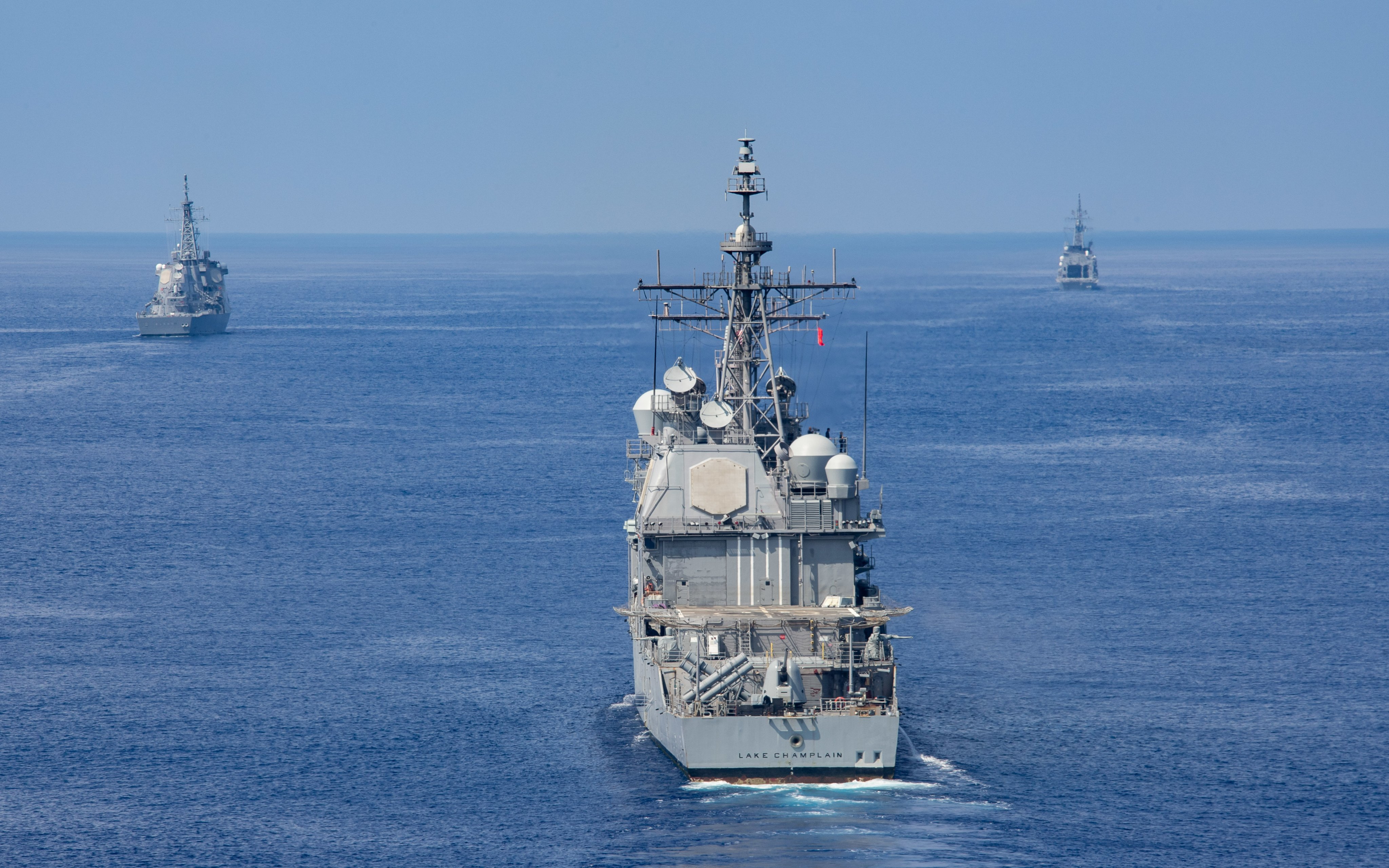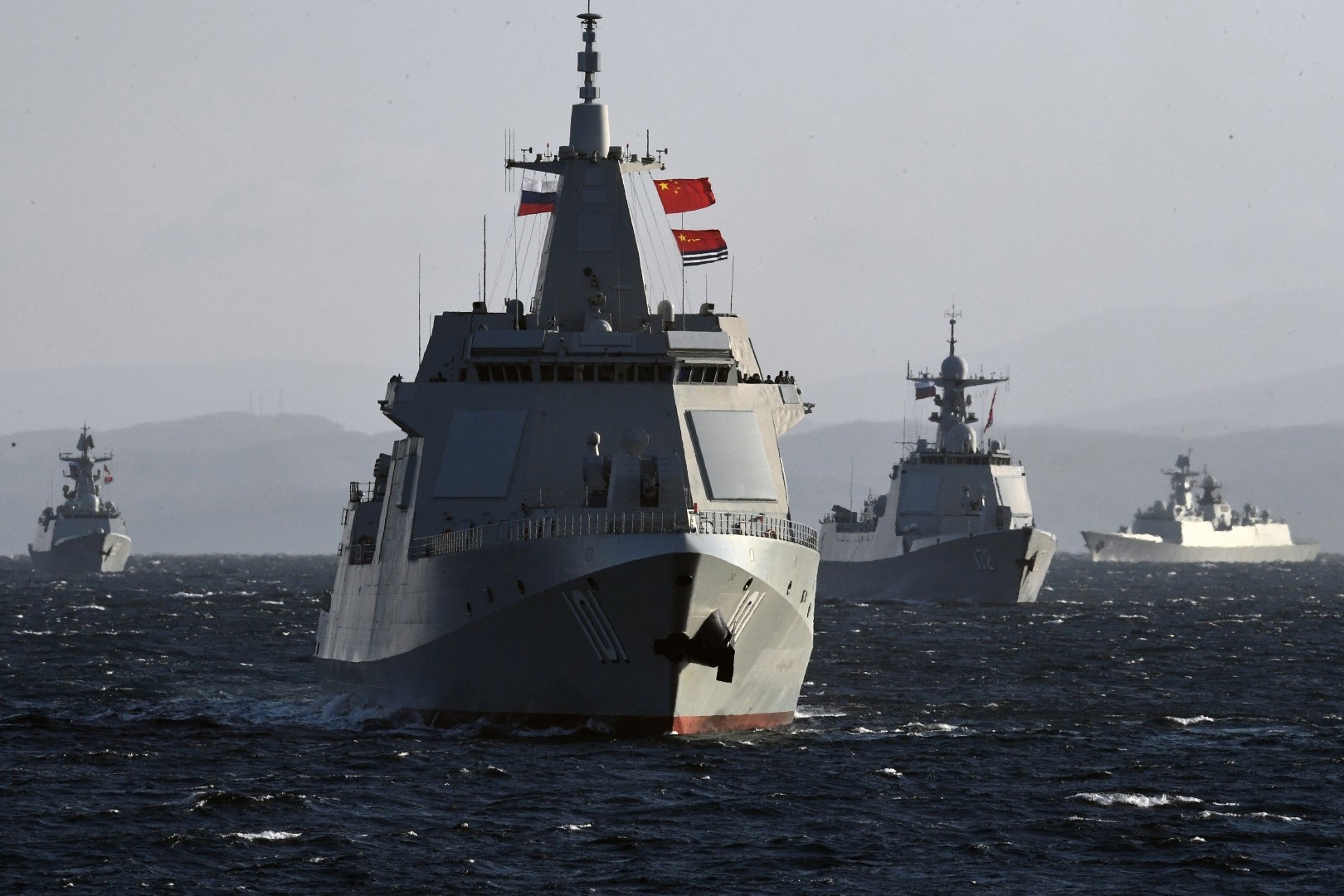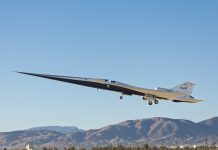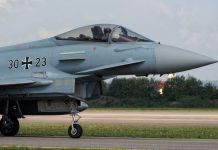On December 24, China lamented the new US defense authorization law that boosts military assistance for Taiwan to assist the self-ruled island state from the Chinese unification threat.
China lambasted the United States by saying that the $858 billion military spending measure contained clauses that “seriously harm peace and stability in the Taiwan Strait,” authorizing up to $10 billion in security assistance and expedited weapons purchases for Taiwan.
However, in what could further anger the Chinese, some inside national security sources have allegedly revealed that the US is considering including the Ticonderoga-class cruiser in the $10 billion military aid package.
On the same day, as China expressed its disenchantment with the US military aid package, several Chinese warplanes and naval vessels came close to Taiwan, forcing the Taiwanese defense ministry to scramble fighter jets and prepare its missile defense systems.
The PLA has significantly upped the ante against Taipei this year, necessitating the US to extend more aid than previously warranted.

The National Defense Authorization Act (NDAA) for 2023 was passed by the US Congress earlier this month. The bill requires the State Department and the Department of Defense to prioritize and expedite the processing of Taiwan’s arms purchase requests and to “not delay the processing of requests for bundling purposes.”
China has categorically and consistently opposed US military assistance to Taiwan, accusing Washington of fomenting trouble and provoking China.
Beijing claims full sovereignty over Taiwan, a democracy of almost 24 million people located off the southeastern coast of mainland China, even though the two sides have been governed separately for more than seven decades.
Any potential transfer of a US warship to Taiwan will likely provoke an angry response from China. Incidentally, two of the US Navy’s Ticonderoga-class guided-missile cruisers carried out routine transit operations in the Taiwan Strait in late August.
In a statement, US Seventh Fleet said: “These ships transited through a corridor in the Strait that is beyond the territorial sea of any coastal State.” The transit was symbolic as it came several days after large-scale PLA military drills conducted in the aftermath of US House Speaker Nancy Pelosi’s visit to Taiwan.
In these drills conducted over several days, the PLA practiced invasion-like operations and surrounded the island state from all sides in its most aggressive set of drills to date. In response to the US Navy’s latest move, the PLA released a statement saying that their Eastern Theatre Command had carried out security tracking of the two US Ticonderoga-class cruisers.
Ticonderoga-Class Cruisers For Taiwan
The Ticonderoga class is a class of guided-missile cruisers in service with the US Navy. Between 1983 and 1994, 27 Ticonderoga Class (CG 47 – CG 73) Aegis guided-missile cruisers were constructed, suggesting that this warship is relatively archaic.
The service has been contemplating the retirement of these aging vessels to shore up finances, but Congress has been reluctant.
These cruisers are well known for providing close-in Fleet Air Defense for the aircraft carrier in a carrier battle group and usually carry the Air Defense Commander. The vessel is equipped with the Aegis Combat System, which integrates the ship’s electronic sensors and weapons systems to engage anti-ship missile threats.
Military experts have made a case for the deployment of these vessels around the Taiwan Strait on some occasions before. The US Navy’s planned retirement of the Ticonderoga-class AEGIS cruisers would be beneficial for bolstering Japan’s air and missile defenses, wrote Stephen Bryen for Asia Times.
The same ships might be stationed all around Taiwan, dramatically enhancing air and ballistic missile defense.

Japan and Taiwan both have modest air defenses at the moment. More extensive and scattered missile defenses are necessary for the region’s defensive arsenal, especially in light of the growth of Chinese short and intermediate-range ballistic missiles as well as sophisticated anti-ship missiles like the DF-21D.
However, China does not consider the vessel a potent threat to its security. When the vessel transited the Taiwan Strait in August, state-controlled media Global Times discussed how the aging US Ticonderoga-class cruiser was no match to the modern PLA warships and could not deter the PLA Navy in the Indo-Pacific.
A Chinese military expert and commentator, Song Zhongping, went so far as to say, “During wartime, the US warships, whether cruisers, destroyers or even aircraft carriers, can’t survive in the Taiwan Straits if they interfere in the reunification process with force because they are too close to the mainland and can’t survive the saturation attacks launched by the PLA’s land-based missiles. So if the US Navy wants to deter the PLA, sailing through the Taiwan Straits is pointless and meaningless.”

The Ticonderoga-class cruiser, however, is a very dated warship, and the PLA’s Type 055 is considerably more sophisticated, Song pointed out, adding that even sending two cruisers this time, the US still cannot intimidate China and that its move only makes it appear to be more of a show to comfort the secessionist Taiwan authorities who place great hope in the US to provide protection.
Chinese military experts believe that once China is forced to launch an operation to resolve the Taiwan question, the PLA will be more direct in its training and preparation for a potential conflict with the US in the future.
These direct warnings and China’s bellicose rhetoric against US warships sailing in the Taiwan Strait, let alone permanently deployed in the region, could lead to escalation between the two bitter rivals.
- Contact the author at sakshi.tiwari9555 (at) gmail.com
- Follow EurAsian Times on Google News




